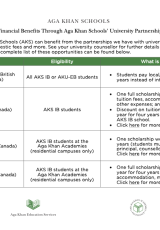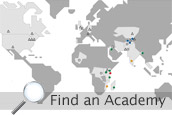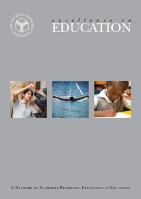The Aga Khan Academy, Maputo Opens in Mozambique
“It was thrilling, exciting,” said Lee Davis, Director of Academic Planning and Development at the Academy in Maputo, recalling the launch. “It was quite emotional because it was the culmination of four years of work for me.”
Lee has been involved with the initial design, planning, government liaison, and recruitment of teachers and students since June 2009. Although the green light for the opening came in 2012, the work that has gone into the recent launch amounts to years, and it’s far from over. The nursery school is the first stage of the master plan to be implemented – with the full junior and senior sections to follow. The Academy in Maputo is closely modelled after the first two Aga Khan Academies established in Mombasa, Kenya and Hyderabad, India.
Lee described the August launch as “small – what we call a ‘soft-launch’,” and said that, “at the moment, we only have four classrooms.” But that doesn’t mean it wasn’t rewarding for him to witness.
“I’ve always said that our students arrive as children and leave as young men and women – confident young men and women, ready to go out into the world,” he said. “And that’s what I’m really excited about, to see them as children and then one day who knows, I may get to see them when they’re leaders in civil society and making critical decisions for their country’s future...so I know it’s great to see that all beginning here.”
The Students and Classrooms
The new school opened with 42 students spread between kindergarten three (five year-olds) and grades one, two and three. The students, ranging from ages five to eight, come from diverse ethnic and socio-economic backgrounds.
“We’ve got a wonderful mix, so their mother tongue could be Gujarati, Afrikaans, English or Portuguese,” Lee said. “We’ve got a Finnish/Mozambican child. We’ve got a pair of Scottish/Mozambican brothers. We’ve got children from Zimbabwe and South Africa. We’ve got a number from India and Pakistan. But the vast majority are Mozambican.”
This combination was something the team worked hard to achieve, putting pluralism at the top of its recruitment agenda.
“We want to celebrate diversity; we want to encourage pluralism,” Lee said. “So we had to cast a net further and encourage as much as possible...families who’ve made a commitment to Mozambique – Southern Africa – and who want their children to grow up as future leaders of this part of the world. We openly went out and did presentations, held open days to encourage [them] to apply to the school.”
Lee interacts with students on a daily basis, and said they were adjusting well to the classes. The curriculum is based on the International Baccalaureate (IB) Primary Years Programme that integrates critical thinking, problem-solving and co-curricular areas into the teaching of standard subjects. The Aga Khan Academies are tailoring the IB programme to train future leaders with additional cross-curricular themes such as ethics and pluralism built into the learning. The curriculum also includes a dual language programme, and in Mozambique that means students study in English one day and in Portuguese the next. That programme has been the hardest to adjust to, Lee said, because many students came in only knowing one of the target languages.
To demonstrate the progress students have made at the Academy, Davis tells the story of a six-year-old Mozambican boy.
“He’s on full financial aid, couldn’t speak a word of English when he first arrived, but now is doing really well, chatting to his mates in English already, greeting me every morning in English and saying goodbye to me when he leaves,” Lee said. “When he needs to ask for something, he tries to say it in English first and then resorts to Portuguese if he can’t express himself well enough. So, really, he’s one of our stars. He’s going to be a great advocate for the programme when he eventually leaves at the age of 18 or 19.”
The Teachers
The Academy has two Portuguese teachers, an Irish teacher and a South African teacher – with more teachers on the way to accommodate the growing student body. Like the students, the most challenging aspect of starting the new school has been the dual language programme, Lee said.
“They’re used to teaching just in their language and having the children all the time, so collaborative planning is really important in making sure that each knows what the other is doing when they don’t have the children for the day,” he said.
One example is the handwriting policy. In Portuguese, you write in cursive when you begin learning the language, Lee said. In English, you start by learning how to form individual letters.
“So we’ve had to work through that – different expectations around writing. And of course at five years of age, the children are learning this from the beginning, so we need to get that right. The teachers have been working that through as well, so you don’t go in with a hard and fast policy. What you do is develop something that is based on discussion and shared understanding.”
Successes and Challenges
For Lee, many of the challenges he and his team have faced go hand-in-hand with the successes they’ve seen. Examples include achieving a diverse student body, adapting to the dual language programme and acquiring necessary academic supplies.
“Mozambique lacks supplies like books and furniture for classrooms, and ordering, manufacturing and transporting them to the school can be difficult,” Lee said. Fortunately, he’s managed to source and deliver what the school needs with help from the Aga Khan Development Network representative and contacts in South Africa.
Planning for the Future
As of now, the Academy consists of the nursery school buildings only. However, Lee estimates that the Junior School will be built by 2015 and will be ready for the August intake that year. The Senior School should follow in August 2017 with the full campus built thereafter. The second phase of construction will begin in late 2014.
By Farah Mohamed
publications




